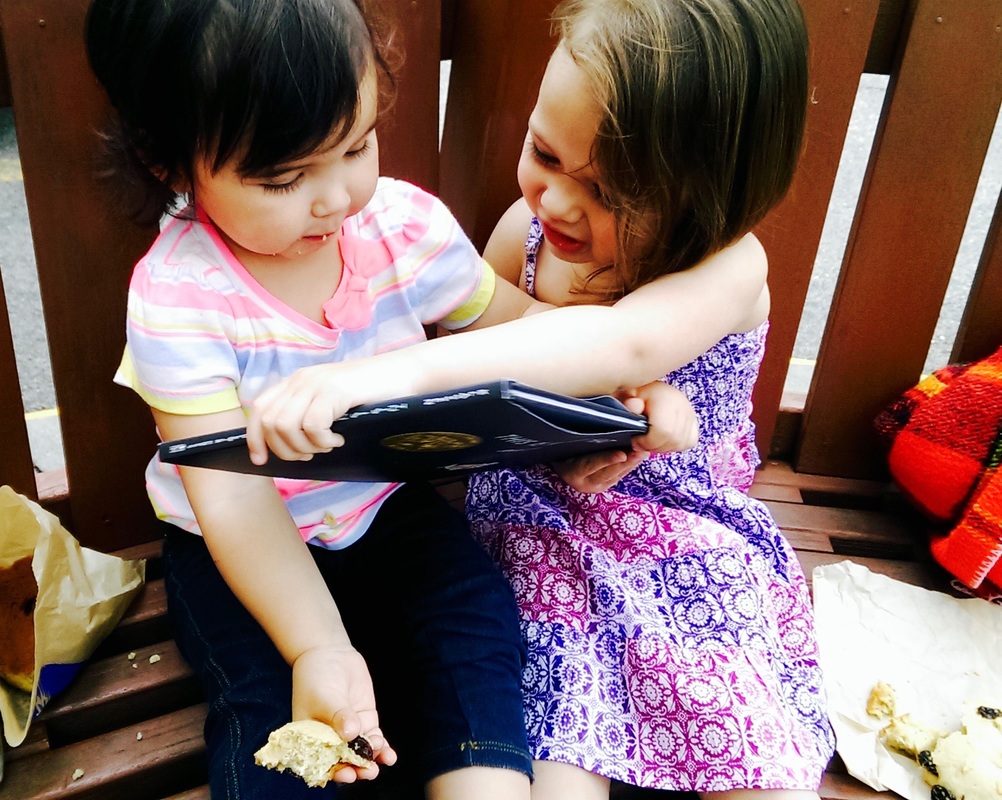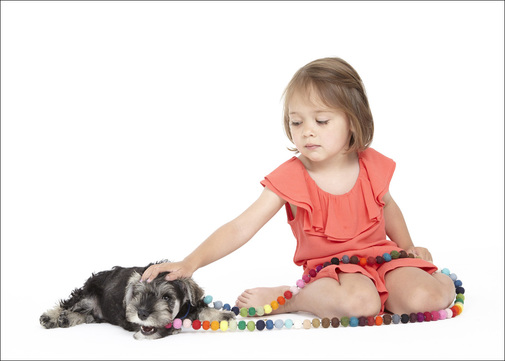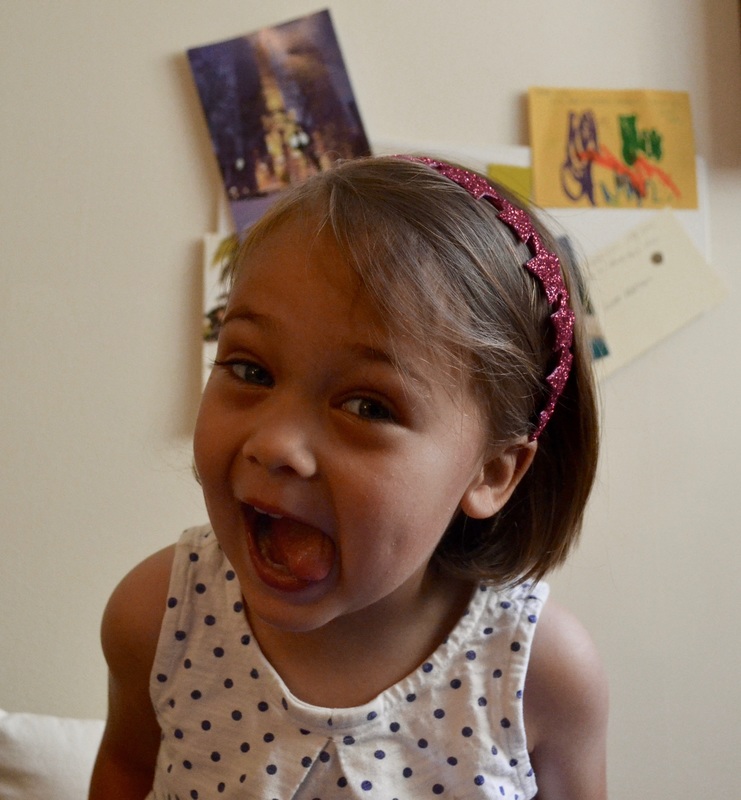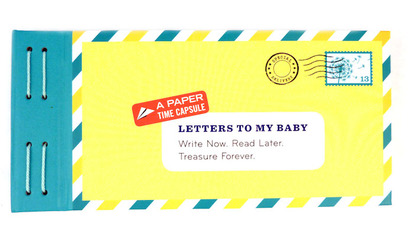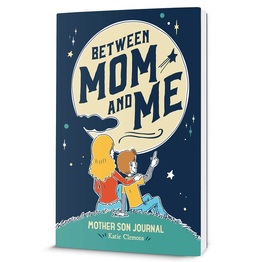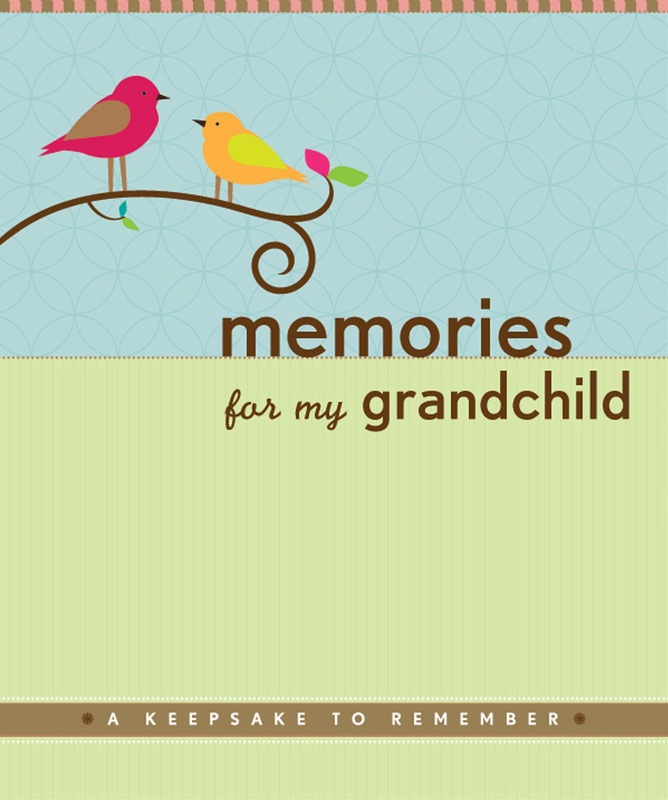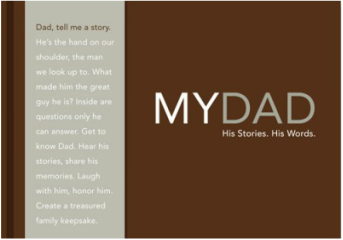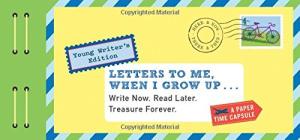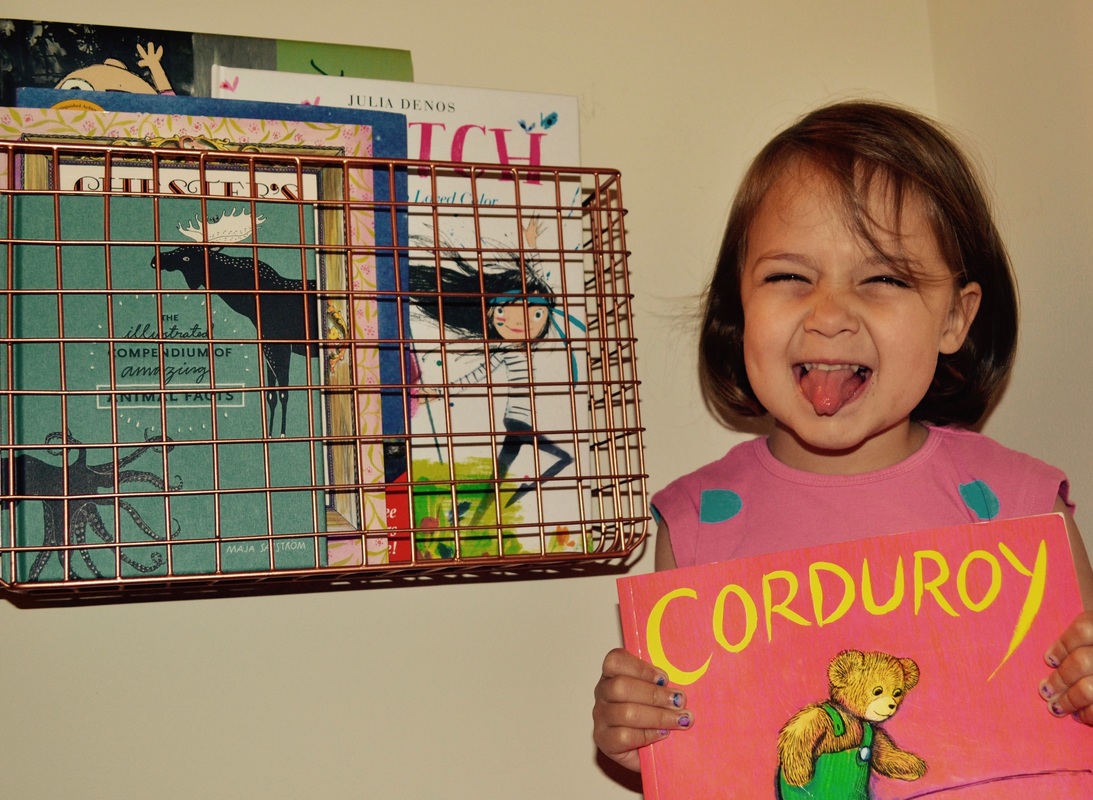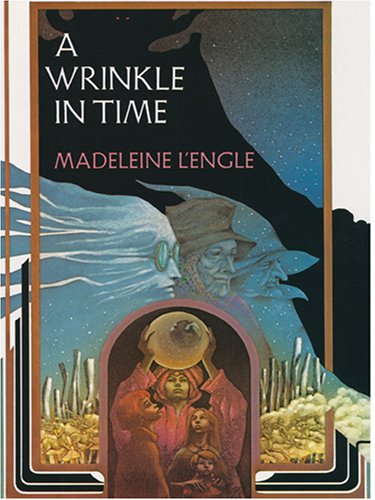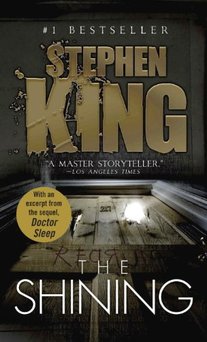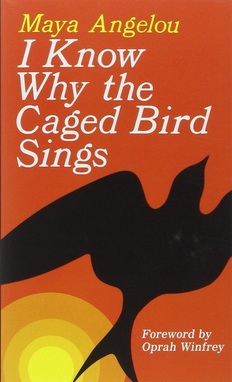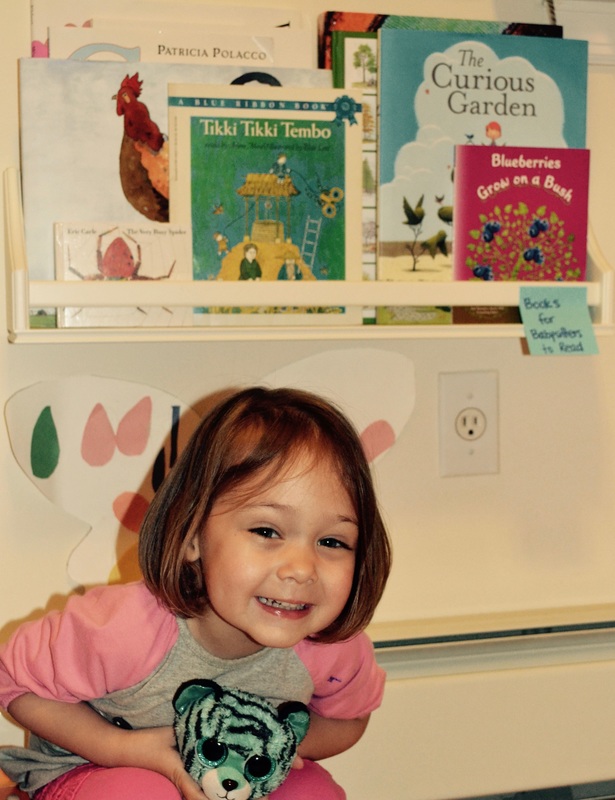|
Please share!
Anytime we go to bookstores, Liliana and I both make big stacks of books that we want to read. We sit on the floor and go through them - sometimes together and sometimes apart. Inevitably, we end up with more kids around us than when we started. And this makes it so much fun.
0 Comments
Please share!
"I want to read Tikki Tikki Tembo..." Liliana says to me.
My response? "Great! Go get it!" Organizing mounds of books can be a daunting task! Especially if kids are in and out of them all day long or in charge of putting them away. But it's one worth doing. Liliana knows how to go find the book she's looking for because they are organized. She knows she can browse her books because she can see her books and this makes her more likely to search, sort and read whatever books she wants to - whenever she wants to. The act of gathering books is easy for her - and that's what you want. You want it to be easy for your kid to browse books, pick a book and sit down with it to read. Here are a few tips to help you get started on organizing your books on a bookshelf.
Please share!
I cannot take credit for the name of this tip. It comes compliments of William Pope.L, an artist. Last week, I took a break from writing a quick literacy tip on purpose. There is a lot going on in real life that is tense and I wanted to give myself some time and space to be uncomfortable, engage with others, reflect on my own thoughts and actions and be ready to re-engage. I think it's important to do this in order to grow and learn as adults and be ready to teach our youngsters. In order to teach, I need to understand. I spent time listening and learning from others - hearing the fabric of our country speak. I am talking about the state of race relations and power structures in our country.
Please share!
This post is part of a series on organizing your physical space to encourage literacy.
Awesome photography and memory captured by Shaina Fishman. Thank you!
A couple weeks ago, Liliana and her new puppy, Noodles, went to a photo shoot. We'd only had Noodles for two days and Liliana knew Noodles was going to be her buddy. But, she wasn't sure how predictable that buddy was yet. He nipped, he barked, he peed wherever he wanted to (still does...).
And this photo captures her trepidation perfectly. She's willing, but unsure. It's also a perfect prompt for me to tell the story of Liliana and Noodles' budding friendship. How she enjoyed bringing him to puppy playtime, how she taught him how to sit, how he was nervous on his first subway ride and how he peed in his carrier in my lap which made me look like I peed in my own pants - and how she bellowed in laughter and asked incredulously, "Mommy, did you have an accident?!" I will print this photo (and others from the shoot) and put them on our walls. It won't live on my phone, in my email or on my desktop. This awesome photo and story will live on my wall. We all want our kids to read. And, we want our kids to understand what they're reading. And! The real kicker - we want them to enjoy reading. This seems obvious, but sometimes getting there is not obvious and it takes some quirky roundabout turns to get there. Enter, printed photos on your walls.
"There is something very powerful in touching your fingers to an actual print,” says Craig Steinberg, a licensed psychologist who works with children ages five through 13. He goes on.
There’s a lot of stimulation of the brain when you have that sensory experience. That is a bit lost in the move to digital. You are touching a keyboard, mouse or a touchscreen but you are not touching the image.”
So, please print your photos and talk about them.
Tell your kids about your favorite memories, your life experiences, your stories. When you do, you will be writing out loud for them. Showing them how to put together a good story, a bad story, one that someone wants to listen to. You'll be showing them how to use the picture to start a story or how a picture better explains a story. You will build their self-esteem and their confidence. You will also be storytelling them your life. And their very important place in your life. Enjoy! P.S. I will also share some of my favorite, easy and creative ways to put photos on your walls in the next few days.
These two photos were the ones Joe and I loved the most from the photo shoot.
Again, photography done by the amazing Shaina Fishman!
Please share!
One of my past tips involved sending mail, but this one is all about getting mail.
I was going through our firesafe box the other day. Among our passports, birth certificates and social security cards, I found two handwritten letters. One is from my cousins who live in Pakistan. They wrote to me after I visited. Even then, reading was important to me - I left them my copies of Harry Potter books that I read on the flights over to Pakistan. They loved them and were getting the next book. Yay! Another, is from my grandfather who passed away in 1994. He worked hard to learn English and he used some of his English to write me letters. He wrote about missing his homeland and wanting the area to be peaceful. I cherish these letters. And, the whole point of getting mail is to read it. It's one other meaningful way to read. Getting Mail
|
|
I collect good storytellers. I like finding stories and analyzing whether it was the best version it could have been.
A Wrinkle in Time is that for me. A story of love, a story of family and a story of personalities. I loved it. And, my copy is signed. Even better. |
|
I went back and forth on this title. In my mind, it's kind of an odd title. But, it was also a first foray into scary fantasy.
I've read more books by Stephen King because this one was so well-written. There are parts in the book that are totally unbelievable in the movie (moving hedge animals) that are so believable in the book, it's...well, scary. It is so well-written. Stephen King is a phenomenal writer. |
|
I don't love poetry, but I love Maya Angelou. She is lyrical, she speaks from the heart. She tugs at your heart.
Maya Angelou writes from her own life and tells her own painful story in such a connected way, it makes it hard to not feel human. As far as I've read, she is the best at writing about humanity overcoming humanity. |
|
I remember reading this book when I was 9.
It was the first book that showed me you could feel empathy and strong emotions through reading about a subject that I knew nothing about. To me, it's timeless. I still feel strong emotions when I think about this book. |
|
Dystopias are a favorite genre of mine. I read almost all of them - even ones that are on the edge of being defined as dystopias.
This was the first one that I read which married my own feminist viewpoints and a genre which I love. And, I found Margaret Atwood, a supremely talented multi-genre author. |
|
This book is a must for any New Yorker. It's a whimsical picture book full of possibilities with illustrations by Maurice Sendak.
I love this book because it gives me a great shared experience with my daughter. She loves this book, I love this book and we can go to Times Square and see if Little Lori made it. |
|
This is one of the only books I've read that speak to my own culture. Cultural experiences through reading are a little surreal, but also very engaging.
I read this book when I was in middle school and roughly the same age as Shabanu. I loved reading about Shabanu, how she made very important choices in her life and became an adult. I loved that it gave me insight to my own culture. |
And, I prefer books in paperback. Unless they are signed, then I'll take them in whatever form you want to give them to me.
What's on your ideal bookshelf?
Enjoy!
Please share!
This post piggybacks on other posts including using your local library system and setting up reading spaces in your home.
One of my friends mentioned to me awhile ago that she bought her sister a poster from Ideal Bookshelf. She had the artist create a custom poster based on favorite books. And I thought, cool!
I want one.
Except, I never got one. Because some thought was nagging at me.
It wasn't until a few weeks ago while I was perusing through articles, that the thought struck me. I love art, I love watercolor, I think the artist is really cool, and I love books. So, what's the problem?!
I realized, what I yearned for was the the real, physical books to be represented in my home. I wanted to pick the book up and feel its heft. Feel the memories in reading it.
And, this makes sense. We all know reading is necessary to our everyday lives. We want our kids to read, we want to read more as adults. The first goal I hear from parents about their kid's reading is that they want their kids to be reading for enjoyment - to be transformed, to draw back the curtain and see the magic. And, to want to continue doing it on their own without prodding.
Having my favorite books on one shelf does this. It's all of my magic in one place.
These books are thoughtful pieces of my life. They weave my life together.
They make me reflect. They make me wonder. And, they make me happy when they are altogether. They make me want to read more.
For those of you wondering, one of these days I probably will get a poster made and I will definitely be getting some of those awesome book pins that Jane makes.
This week's tip is a thought exercise (and I will share my list tomorrow).
I want one.
Except, I never got one. Because some thought was nagging at me.
It wasn't until a few weeks ago while I was perusing through articles, that the thought struck me. I love art, I love watercolor, I think the artist is really cool, and I love books. So, what's the problem?!
I realized, what I yearned for was the the real, physical books to be represented in my home. I wanted to pick the book up and feel its heft. Feel the memories in reading it.
And, this makes sense. We all know reading is necessary to our everyday lives. We want our kids to read, we want to read more as adults. The first goal I hear from parents about their kid's reading is that they want their kids to be reading for enjoyment - to be transformed, to draw back the curtain and see the magic. And, to want to continue doing it on their own without prodding.
Having my favorite books on one shelf does this. It's all of my magic in one place.
These books are thoughtful pieces of my life. They weave my life together.
They make me reflect. They make me wonder. And, they make me happy when they are altogether. They make me want to read more.
For those of you wondering, one of these days I probably will get a poster made and I will definitely be getting some of those awesome book pins that Jane makes.
This week's tip is a thought exercise (and I will share my list tomorrow).
If you were to have an ideal bookshelf, what would be on it?
Please share!
This post will piggyback on other upcoming posts including using your local library system and setting up reading spaces in your home.
|
The bookcase is awesome. Here's a link to it in case you want it too!
|
This one is quick and relaxing (I promise!). Sort your books. Sort your own adult books, sort your kids' books, sort your neighbor's books (well, not really). We want our kids to have lots of books to choose from - but also, we need to make it easy for our kids to choose books. So, as a teacher, I organized away. I made it predictable. I made it a routine. I made it accessible to choose appropriate books regularly. And then, I re-organized with the kids when they came to school so it was a collaborative effort. They had some ownership and knew how the book organization system worked. So, when I started getting books for Liliana's library, it was no different. I started sorting. |
Sorting books accomplishes a few awesome things:
It shows Liliana that books are important - they do have a place to go. They matter enough to have a defined place. The only other thing in our house that is that important is the underwear drawer and we all know undies are a necessity most days.
It creates a mental schema for Liliana. That book goes with the other book right next to it, because they are always in the same bin or near each other on the shelf. Now she knows the Berenstain Bear books are all similar. She can find all of her number books in one spot. If she's looking for a "book with a sticker" she knows where to look. They are all together.
It keeps me sane when books are strewn about because I know they have a particular place to go when I do decide to pick up.
And,
It shows me what gaps we have in our books.
It shows Liliana that books are important - they do have a place to go. They matter enough to have a defined place. The only other thing in our house that is that important is the underwear drawer and we all know undies are a necessity most days.
It creates a mental schema for Liliana. That book goes with the other book right next to it, because they are always in the same bin or near each other on the shelf. Now she knows the Berenstain Bear books are all similar. She can find all of her number books in one spot. If she's looking for a "book with a sticker" she knows where to look. They are all together.
It keeps me sane when books are strewn about because I know they have a particular place to go when I do decide to pick up.
And,
It shows me what gaps we have in our books.
|
Most classroom teachers will try to have a mix of these genres: Fairytales, Mysteries, Realistic Fiction, Historical Fiction, Fantasy, Informational, Autobiographis/Biographies, Poetry and Folktales/Fables. Sometimes, if I had a lot of one author (Judy Blume, Gary Soto) or a lot in a specific area (Dinosaurs), they would get sorted into their own book basket. |
So, start sorting!
1. At home, start by just sorting fiction and non-fiction. If your kids are old enough, sort the books with your kids. You may find that you are helping them to understand a genre. And you will certainly flip through more of your books. They will too.
2. Take your time. Even though this is a short tip, take your time. This might take you a few days or even a couple of weeks. That's totally fine.
3. Take note. After you sort your home library, you'll start to see gaps. Usually, kids don't have a ton of folktales and fables at home and sometimes historical fiction is left out in the cold too. You're looking for an even mix of fiction and non-fiction as well.
4. Use your notes to direct some new book choices. Now you know where you can provide more exposure for your kids. Likely, you have a lot in one genre because your kid likes that genre and so you've fed the interest already (that's great!). Keep that up.
Supplement their book choices in the future with the missing genres - create book wishlists so other people know what to get your kids, go to the library with a genre in mind to look at, share books with other friends who may have your missing books.
5. Maintain it! Once you've sorted your kid's books, maintain the system. Your child may be able to maintain it mostly on their own and so you can just check-in monthly. Or, you can maintain it until you feel ready to hand over your home library sorting to your child.
2. Take your time. Even though this is a short tip, take your time. This might take you a few days or even a couple of weeks. That's totally fine.
3. Take note. After you sort your home library, you'll start to see gaps. Usually, kids don't have a ton of folktales and fables at home and sometimes historical fiction is left out in the cold too. You're looking for an even mix of fiction and non-fiction as well.
4. Use your notes to direct some new book choices. Now you know where you can provide more exposure for your kids. Likely, you have a lot in one genre because your kid likes that genre and so you've fed the interest already (that's great!). Keep that up.
Supplement their book choices in the future with the missing genres - create book wishlists so other people know what to get your kids, go to the library with a genre in mind to look at, share books with other friends who may have your missing books.
5. Maintain it! Once you've sorted your kid's books, maintain the system. Your child may be able to maintain it mostly on their own and so you can just check-in monthly. Or, you can maintain it until you feel ready to hand over your home library sorting to your child.
A note for baby, toddler and preschooler libraries...
You will be surprised about how many genres you will acquire, so still sort them. You're doing the sorting and putting away until your child is old enough to help you.
Many little kid books are really Animal Fantasy books (talking animals!). But, you may also end up with other genres (Alphabet, Number, Shape, Colors, Goodnight books). You may have lots of certain authors (Eric Carle, Leo Lionni, Maurice Sendak, Dr. Seuss) or you may have certain strong topic areas (Seasons/Weather, Holidays, Transportation, Potty Training).
In short, still sort away.
Enjoy!
Many little kid books are really Animal Fantasy books (talking animals!). But, you may also end up with other genres (Alphabet, Number, Shape, Colors, Goodnight books). You may have lots of certain authors (Eric Carle, Leo Lionni, Maurice Sendak, Dr. Seuss) or you may have certain strong topic areas (Seasons/Weather, Holidays, Transportation, Potty Training).
In short, still sort away.
Enjoy!
For those of you who ask for references:
Jones, J. A. (2006), Student-Involved Classroom Libraries. The Reading Teacher, 59: 576–580.
Ray Reutzel, D. and Clark, S. (2011), Organizing Literacy Classrooms for Effective Instruction. The Reading Teacher, 65: 96–109.
Ray Reutzel, D. and Clark, S. (2011), Organizing Literacy Classrooms for Effective Instruction. The Reading Teacher, 65: 96–109.
Please share!
Of course, this post applies to any caregiver - grandparents, babysitters, aunts, uncles - basically any adult who can read, who will be looking after your child and in your house.
|
Last week, we had a last-minute babysitter coming to our house.
Usually, I have something specific queued up for a babysitter and Liliana to do together (whether they do it or not is another story). It just gives Liliana a specific focus when I am walking out the door. She can focus on doing "whatever I left out" instead of my leaving. Since this was a last minute gig, we did something I used to do in the classroom. We made a stack of books for the babysitter to read. I used to have kids make stacks or lists of picture books they wanted either me to read with them as a class, or have someone read to them on the weekend. This set the expectation that reading would happen and it gives kids the power to choose their books (super important!). |
Categories
All
Award Winning Books
Baby Books
Banned Books
Big Kids
Books And Movies
Boy Readers
Elementary
Gift Guides
Ideal Bookshelf
Middle School
Picture Books
Poetry
Pre K
Quick Literacy Tips
Reading And Art
Reading And Science
Reading Intentionally
Reading Reflections
Reading To Your Kids
Read Joyfully
Read Real Books
Sunday Stories
Therapeutic Reading
Upper Elementary
Writing
Archives
December 2019
August 2016
July 2016
June 2016
May 2016
April 2016
March 2016
February 2016
January 2016

